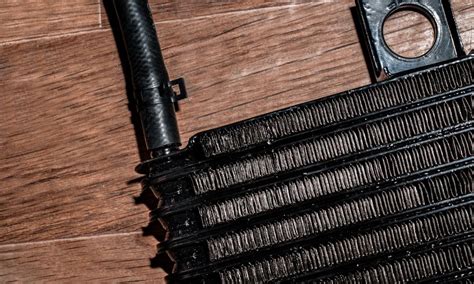Aftermarket Transmission Cooler: Avoid Costly Repairs
Your vehicle's transmission is a complex and vital component, responsible for smoothly transferring power from the engine to the wheels. Overheating is a common enemy of transmissions, leading to costly repairs or even complete failure. An aftermarket transmission cooler can be a smart investment to protect this critical system and prevent significant financial headaches down the line. This article will delve into the benefits of installing an aftermarket transmission cooler, addressing common concerns and ultimately helping you make an informed decision.
Why Does My Transmission Need a Cooler?
Modern automatic transmissions generate significant heat during operation. This heat is a byproduct of friction within the transmission itself, particularly during periods of heavy load, towing, or stop-and-go traffic. While your transmission has an internal cooling system, it's often insufficient, especially under demanding conditions. Prolonged overheating can lead to:
- Reduced Transmission Life: Excessive heat breaks down the transmission fluid, causing it to lose its lubricating and cooling properties. This leads to premature wear and tear on internal components.
- Slipping or Shuttering: Overheated fluid can cause the clutch packs to slip, resulting in a noticeable loss of power and jerky shifting.
- Complete Transmission Failure: In severe cases, overheating can cause catastrophic damage, necessitating a complete transmission rebuild or replacement – an extremely costly repair.
What are the Benefits of an Aftermarket Transmission Cooler?
An aftermarket transmission cooler provides an additional layer of protection, significantly reducing the operating temperature of your transmission fluid. The benefits are substantial:
- Extended Transmission Life: By keeping the fluid cool, the cooler significantly prolongs the lifespan of your transmission, saving you money on repairs in the long run.
- Improved Shifting: Cooler fluid ensures smoother, more responsive shifting, enhancing the overall driving experience.
- Enhanced Towing Capacity: For those who frequently tow heavy loads, an aftermarket cooler is practically essential. It helps maintain optimal transmission temperature even under extreme stress.
- Increased Reliability: A cooler significantly reduces the risk of transmission failure, providing peace of mind and preventing unexpected breakdowns.
What Types of Aftermarket Transmission Coolers Are Available?
Several types of aftermarket transmission coolers cater to different needs and budgets:
- Stack Plate Coolers: These are compact and efficient, often integrated into the radiator.
- Tube and Fin Coolers: These offer a larger surface area for heat dissipation, making them ideal for demanding applications.
- Air-to-Fluid Coolers: These cool the fluid using ambient air, often mounted in front of the radiator.
How Much Does an Aftermarket Transmission Cooler Cost?
The cost varies depending on the type and brand, ranging from a few hundred dollars to over a thousand for more advanced systems. However, the cost is significantly less than the expense of a transmission repair or replacement.
Is Installing an Aftermarket Transmission Cooler Difficult?
The installation complexity varies depending on the vehicle and the cooler type. While some installations are relatively straightforward, others may require professional assistance. Consult your vehicle's service manual or a qualified mechanic for guidance.
Should I Install a Transmission Cooler?
For many drivers, especially those who frequently tow, drive in stop-and-go traffic, or operate their vehicles in hot climates, an aftermarket transmission cooler is a worthwhile investment. The long-term cost savings and increased reliability far outweigh the initial expense.
What are the Different Types of Transmission Fluid?
Different vehicles require different types of transmission fluid, each with its own properties and specifications. Using the incorrect fluid can damage your transmission. Always consult your vehicle's owner's manual to determine the correct fluid type for your vehicle.
How Often Should I Change My Transmission Fluid?
Transmission fluid change intervals vary depending on the vehicle and driving conditions. Refer to your owner's manual for the recommended service schedule. Regular fluid changes are crucial for maintaining optimal transmission health.
Can I Use a Transmission Cooler with a Stock Radiator?
Yes, you can usually use a transmission cooler with a stock radiator. However, ensure that the cooler is compatible with your vehicle and installed correctly to avoid any issues.
By investing in an aftermarket transmission cooler, you're making a smart, proactive decision that safeguards your vehicle's transmission and protects your wallet from costly repairs. The peace of mind and extended lifespan it offers are invaluable.

